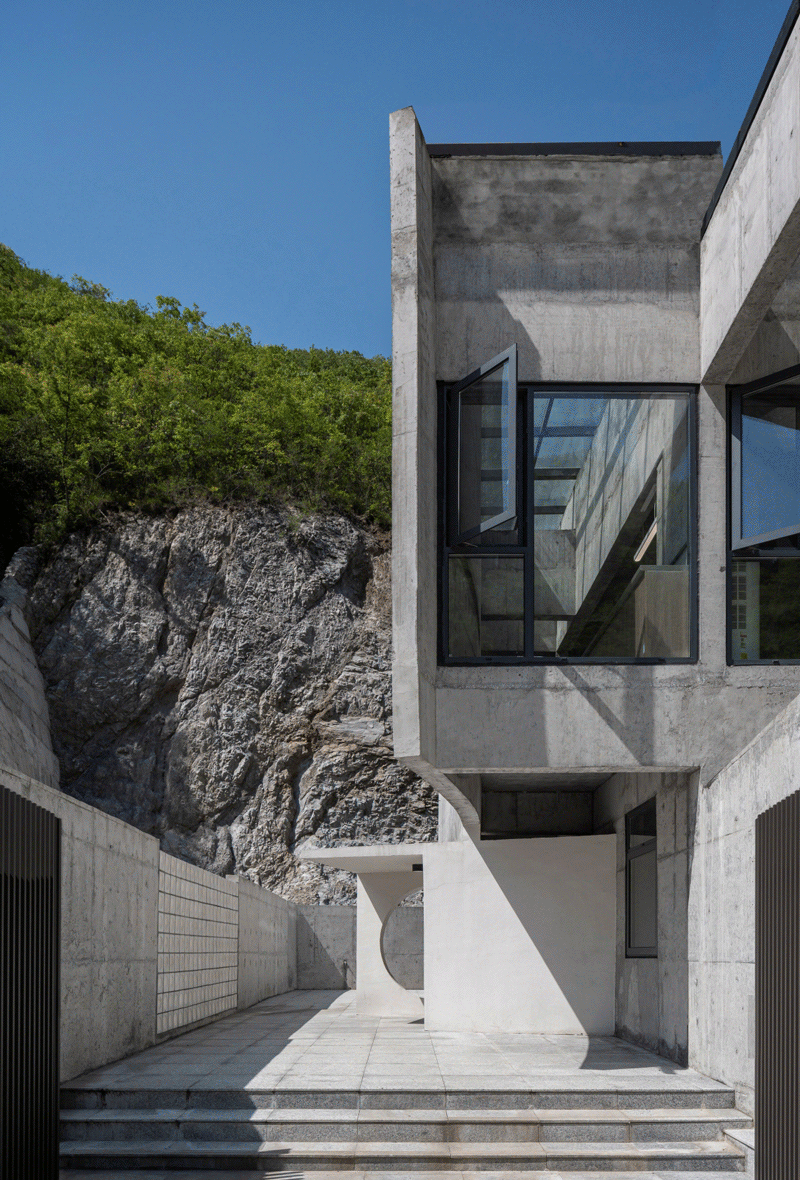
设计单位 郦文曦建筑事务所
项目地点 湖北
建筑面积 45平方米
建成时间 2023年
本文文字由设计单位提供。
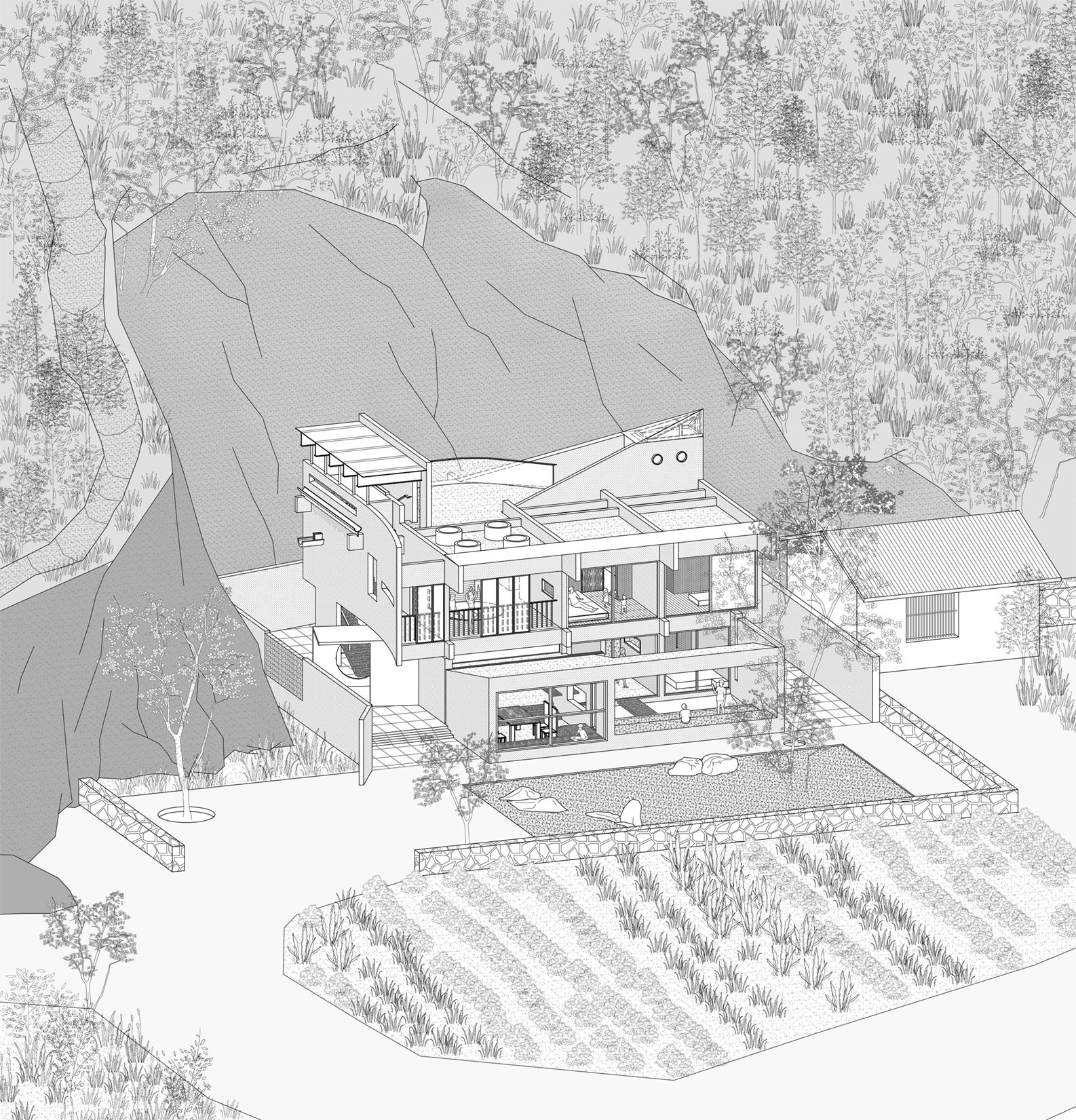
4年前,东莞的王先生联系到事务所,说在他老家有块地,要造一个独立住宅,想请我帮他设计。
详谈之后得知当地交通不便,建材运输非常困难,加之周围青壮年不多,人工成本较高,何况当时我人在东京读博,不可能长期驻场。这一系列困难使得我一度想推掉这个设计,但当看到现场之后,我还是决定接下来,只为一个原因:山崖。



山之几何
靠崖基地藏在大山深处,崖壁极其坚硬,其纹理粗糙,如巨人手掌一般扑面而来。
开工已是深秋,南面苍山如笑,院里的柿子树已经结果,留下它,完工时面对青山品茗之时可以摘下火红的柿子伴茶鲜。
基地山谷幽静,林木葱郁,断崖阻隔了北来的寒风,把建筑包裹在里面。山峰的角、崖壁的直、山路的曲,这一切都在提示一种几何化的东西。
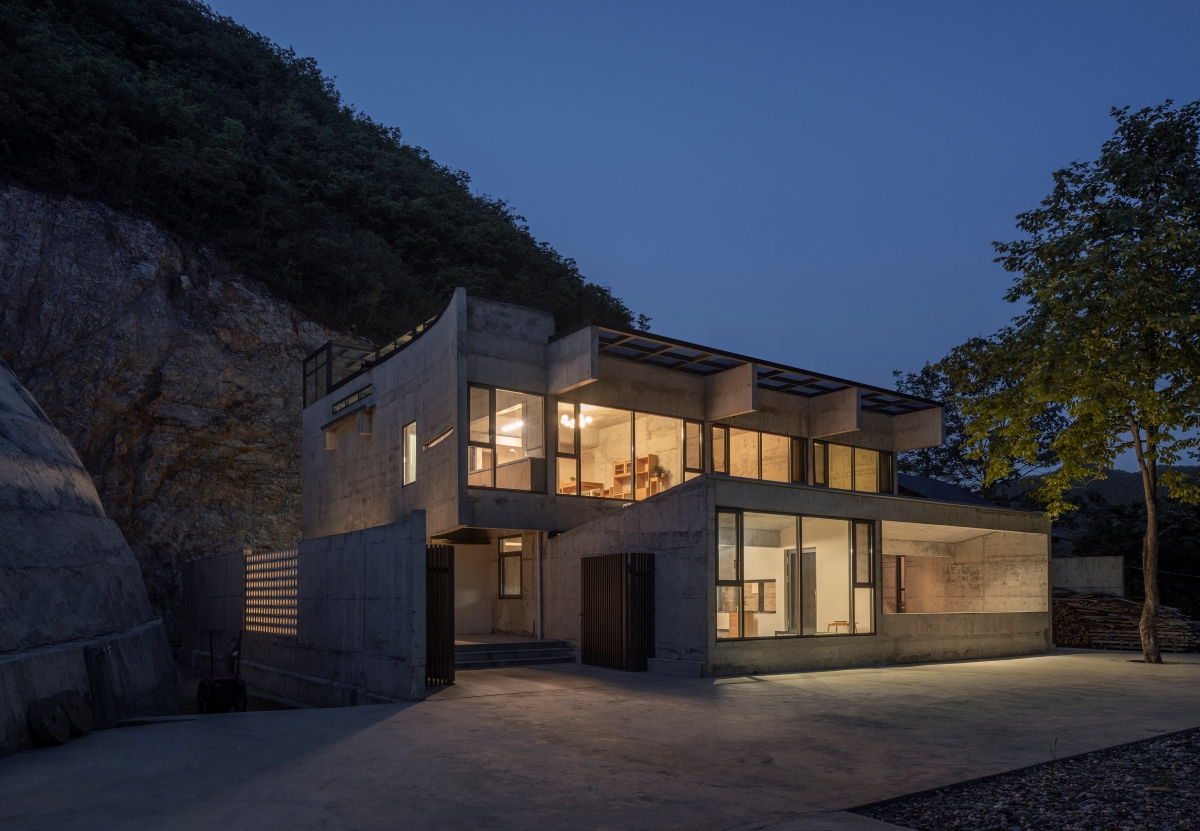
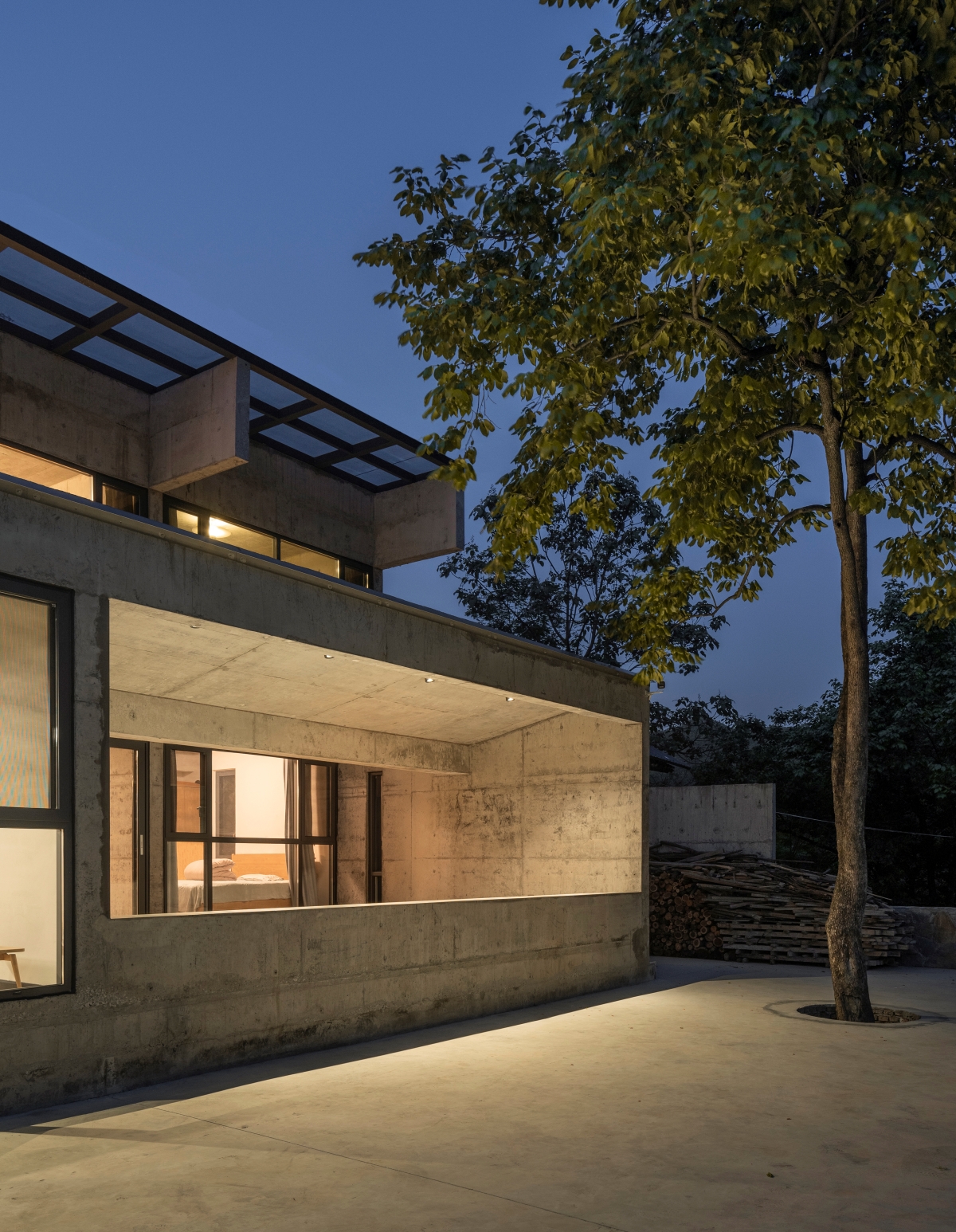

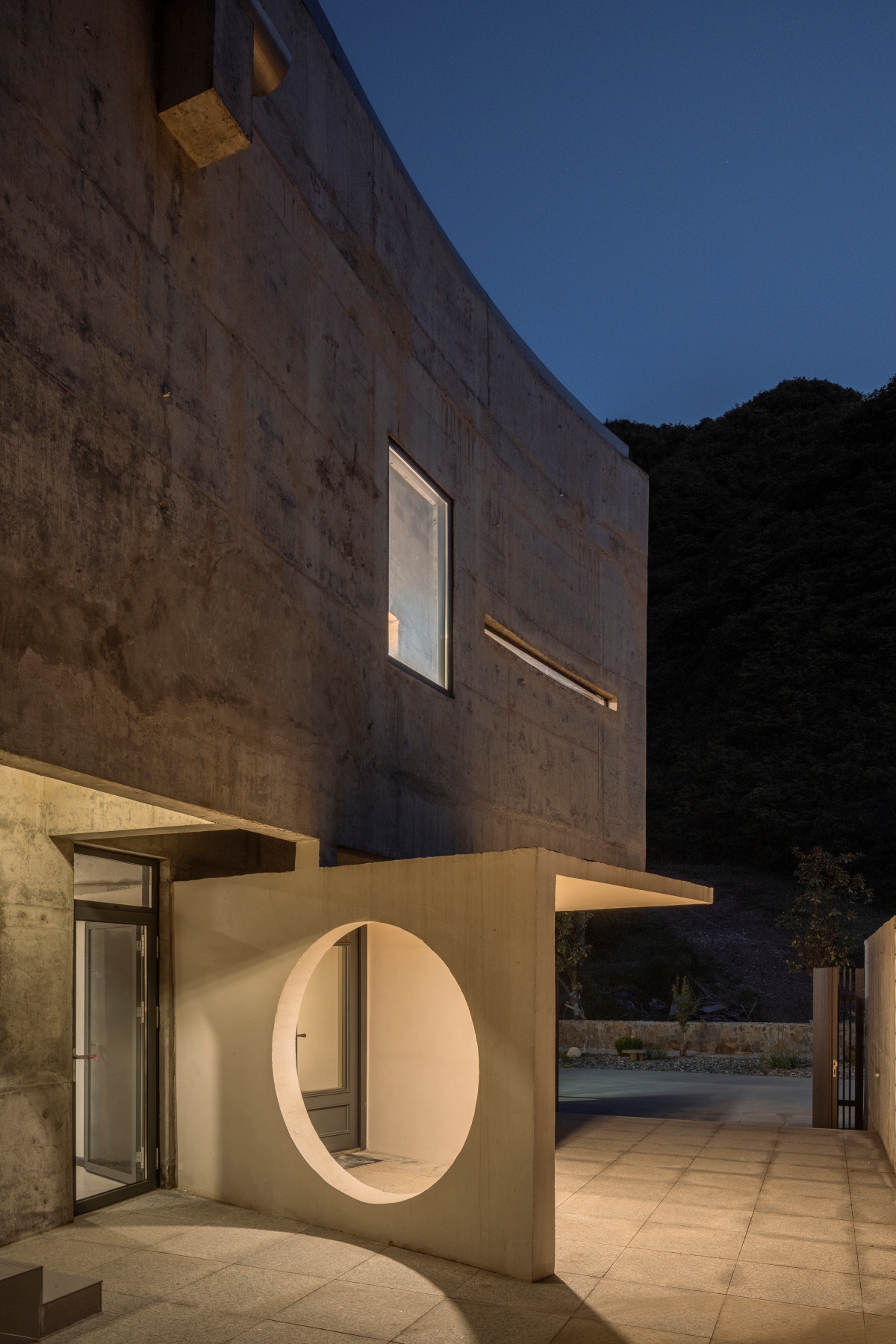
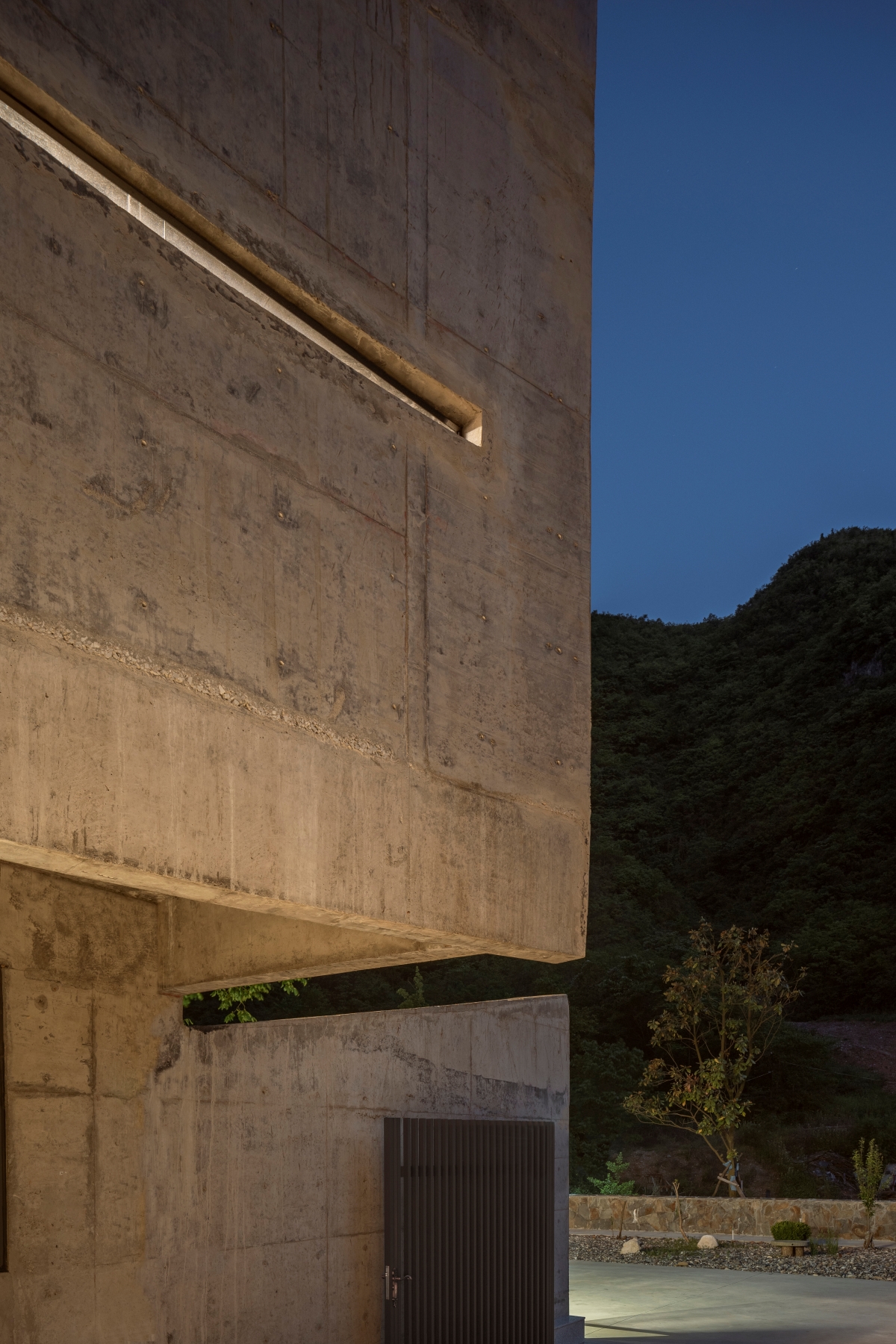
建筑的围墙斜向转折包围西侧山体,形成窄小的入口,二层以弧墙呼应山体的走势,横梁巨大,突出在南北两侧,似从山崖里生长出来。
房子北面逼近山崖,形成一个狭长的线性庭园,南侧则面向青山敞开去拥抱自然,屋顶锥形的空间回应了山峦,里面仅有两个圆窗能够看到外部风景,光线来自头顶,是独自面对自我的内省空间。
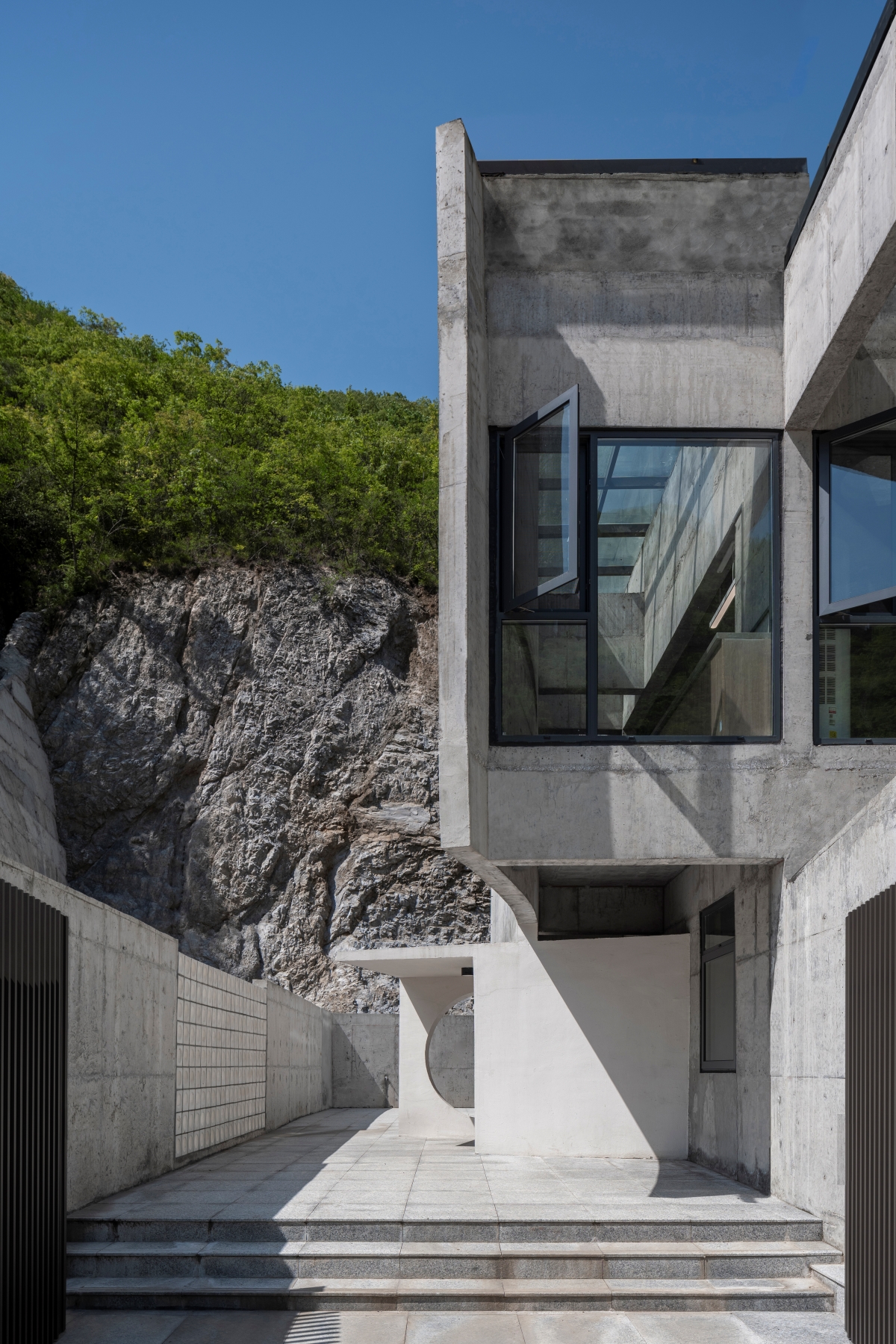


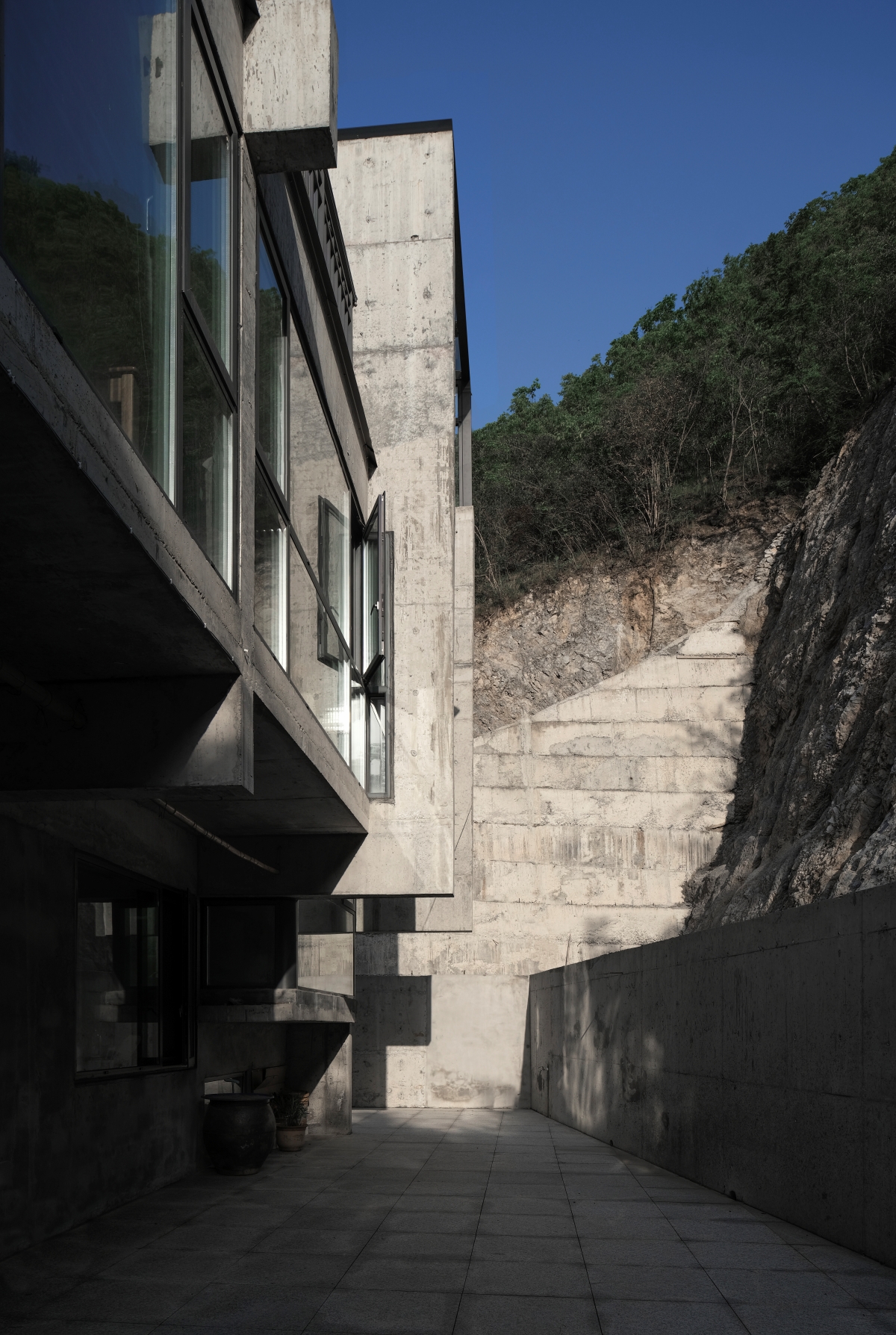


方圆角折
几何与自然的相互参照是《崖之家》空间美的来源。建筑采用方、圆、角、折等四个动作去回应地方生活:“方”是客厅和卧室,即规矩的居住日常;“圆”是入口和天窗,即感性的侧脸;“角”是山形,也是走向内心的冥想空间;“折”是围墙,是对周围环境的包裹和容纳。
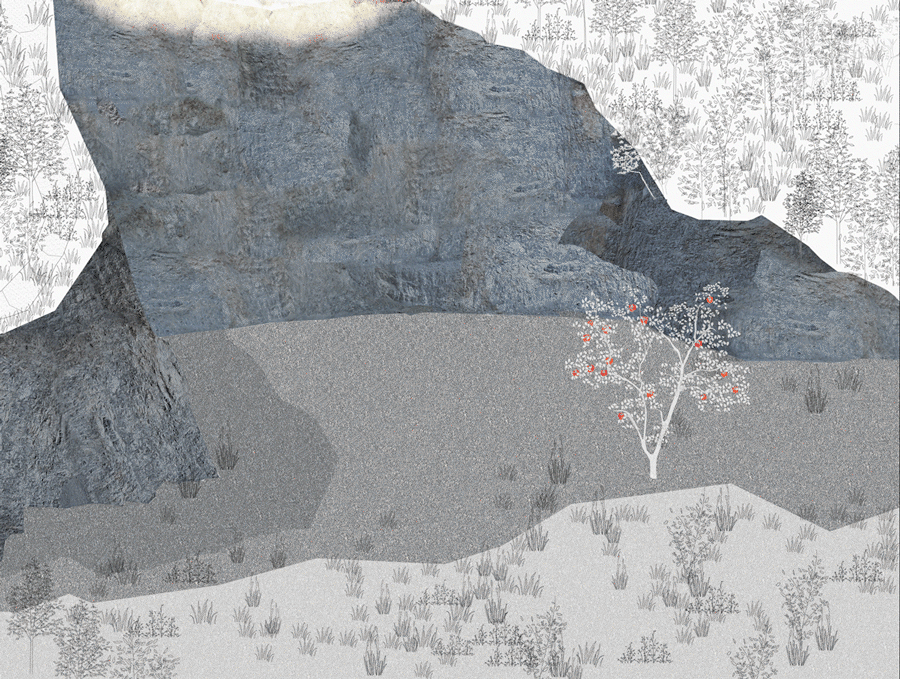


室内设计延续了几何的手法,让光在一天中的不同时段从不同角度进入建筑的内部。
青川和断崖是山的两种形式,后者更接近于山的剖面,二者共同见证了草木荣枯的内在循环。不同类型的开窗对景山体的不同侧面,让建筑和人共同见证生命的往复循环。
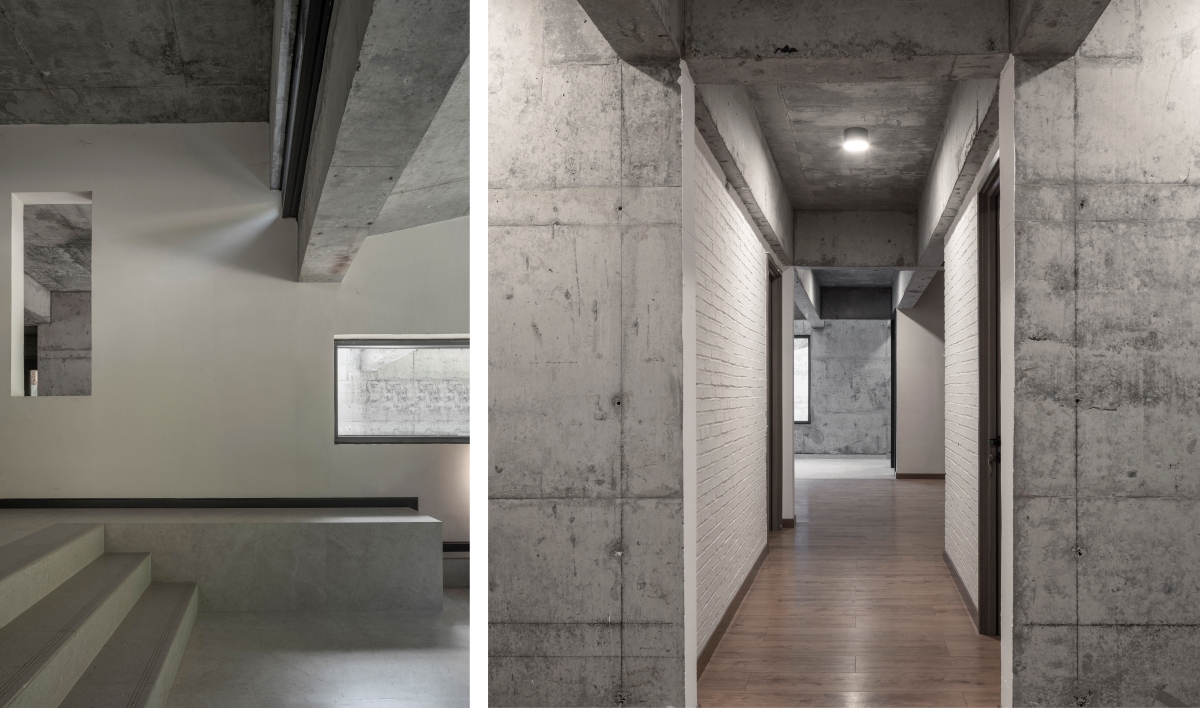


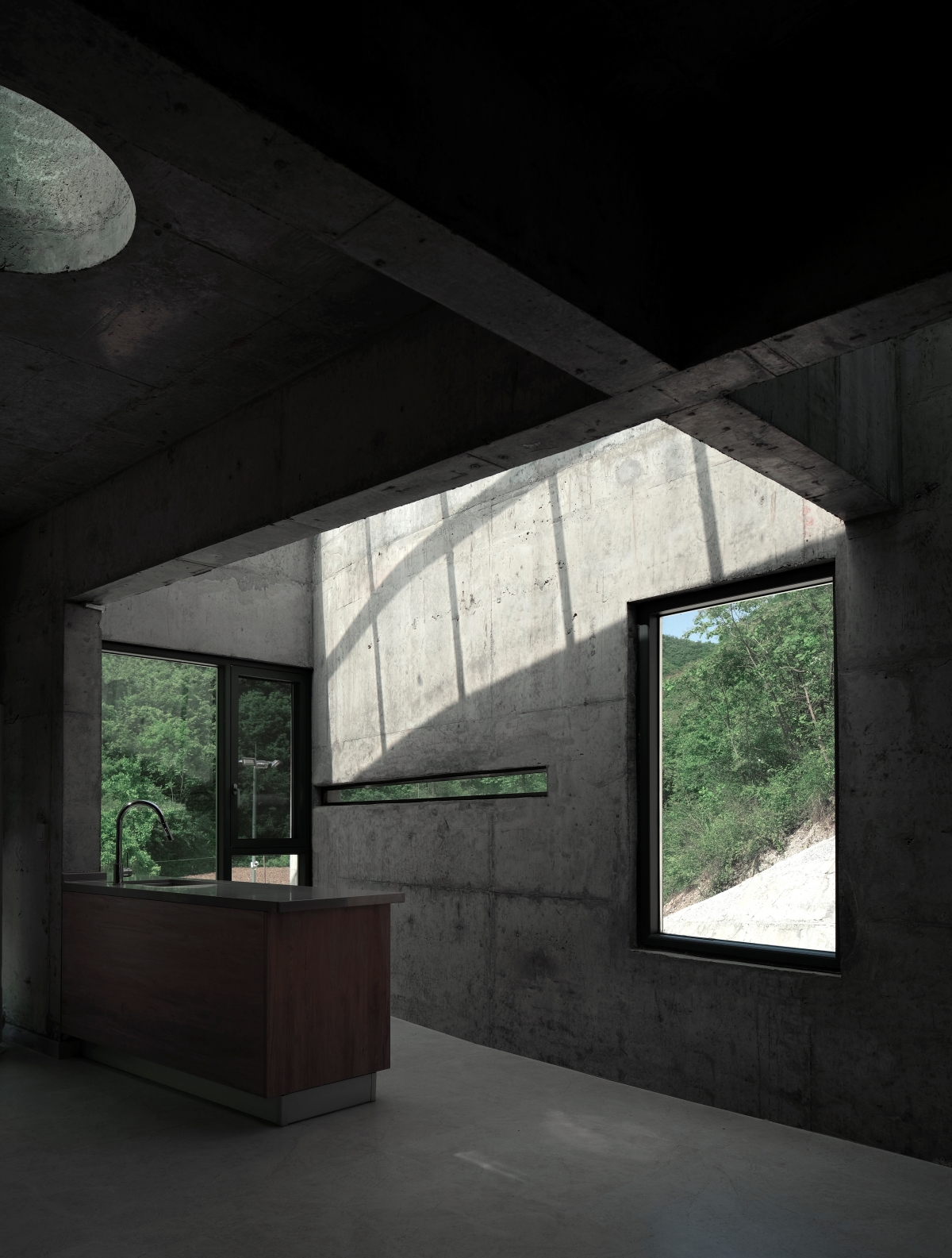
粗粝细腻
如今有不少人喜欢清水混凝土,但是他们喜欢的并不是它原始的粗粝质感,而是经过处理的丝滑表面,作为混凝土重要组分的砂石骨料,最初是从山里开采出来的,当看到崖壁时,我们会意识到丝滑根本就不是它原本的属性,混凝土应该保持它如顽石一般粗粝的质感。
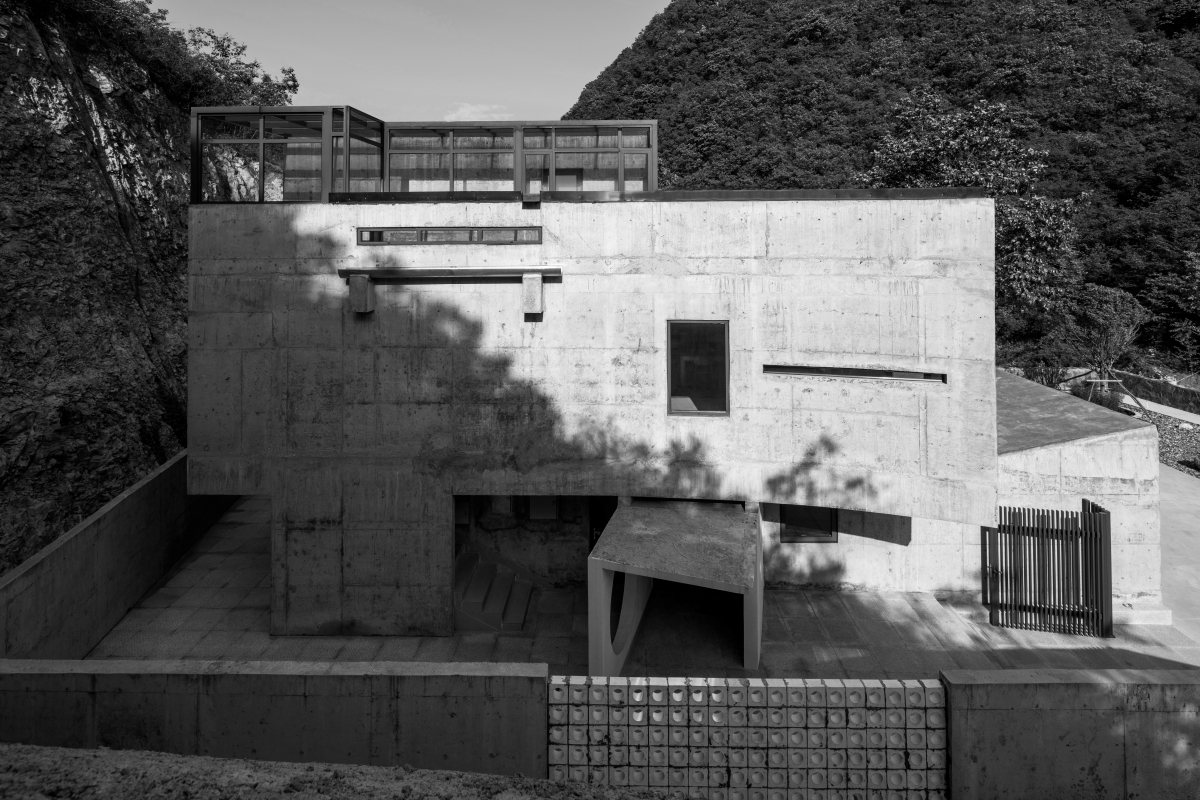

然而粗粝亦可细腻,我们以不同方式观察四季变化,与来自八方的光线不期而遇,这一切会给建筑带来绵密的气息。
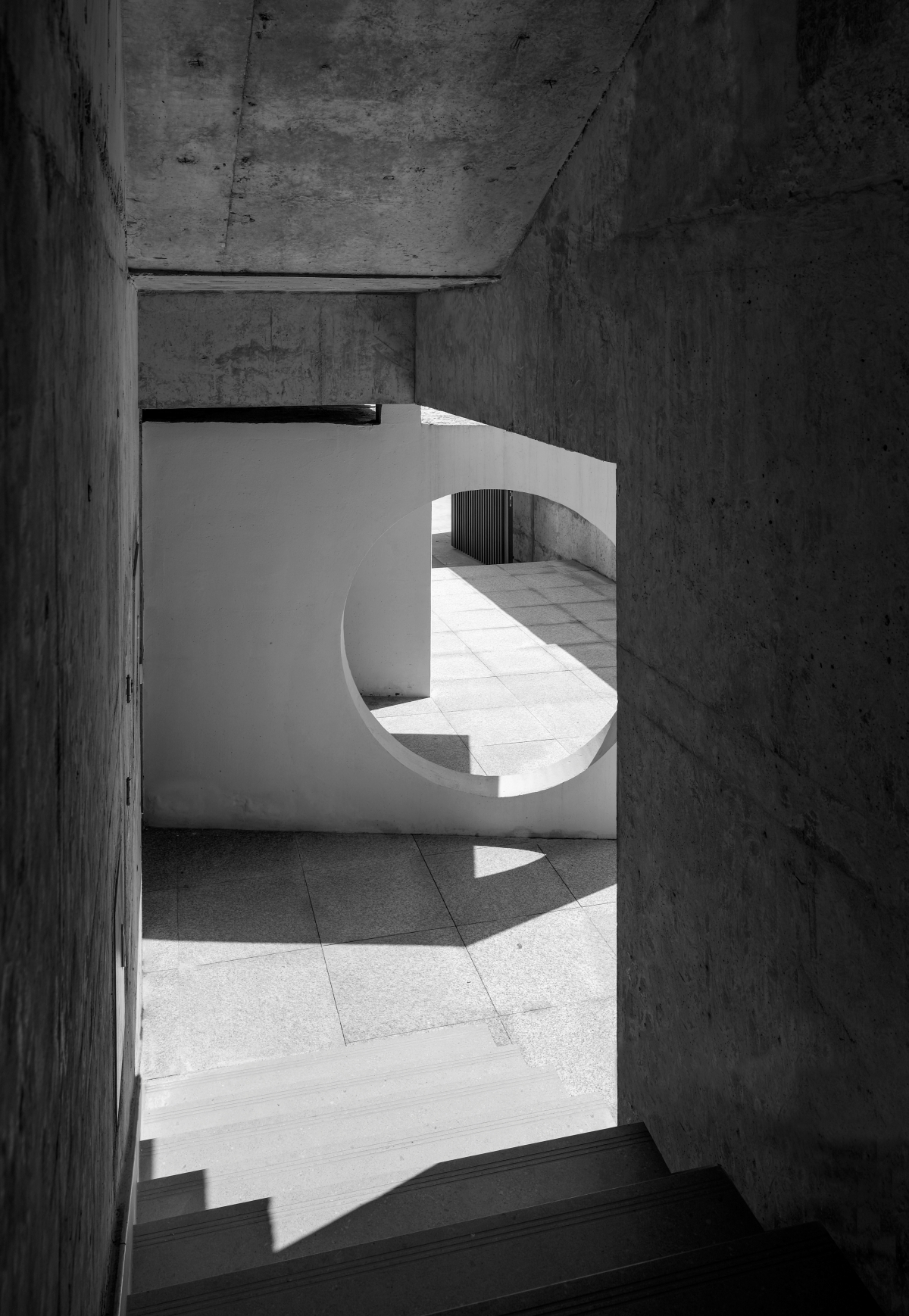
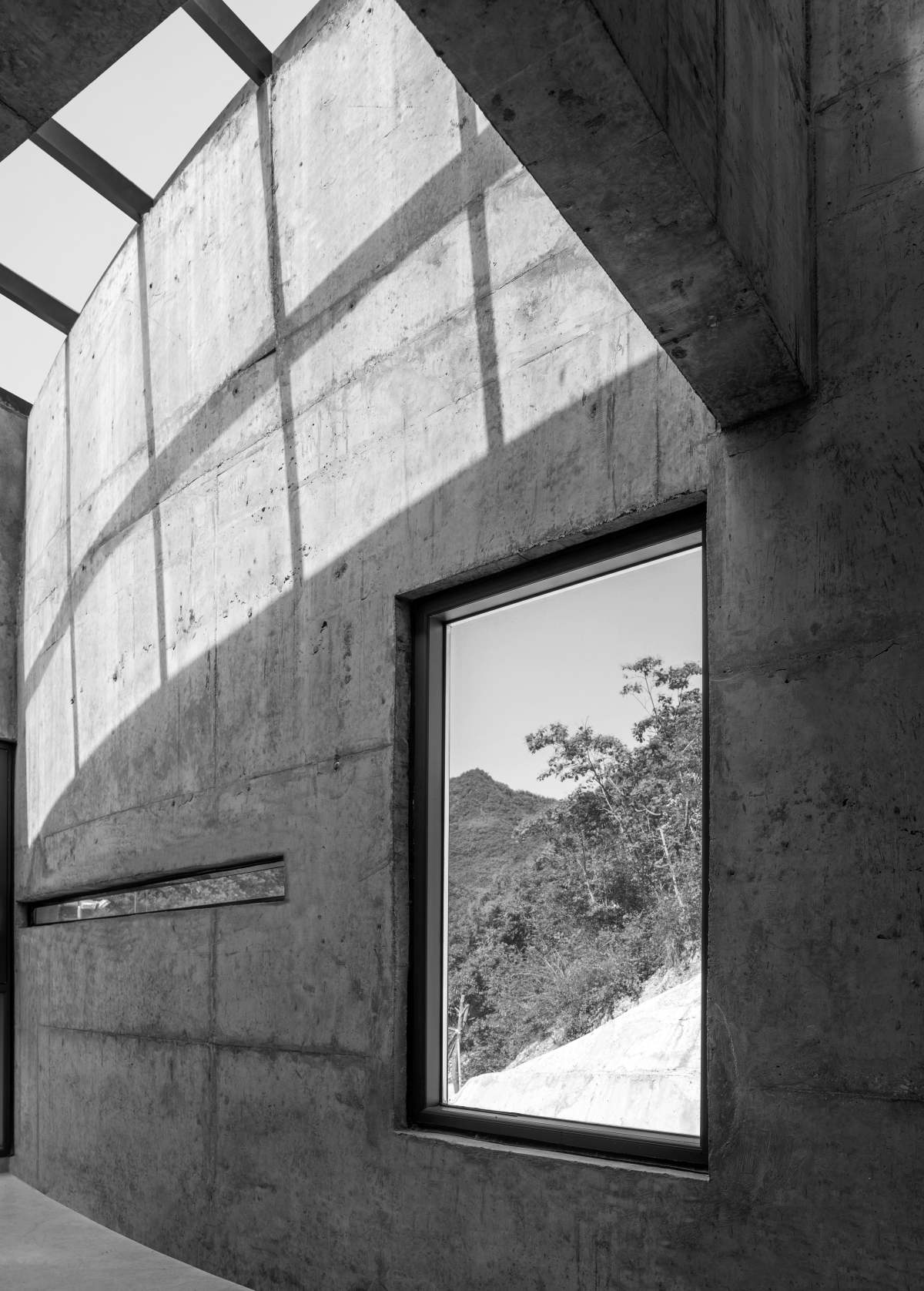
尾声
四个春天过后,房子终于竣工了。《崖之家》是工作室第三个建成的独立住宅,这距离我大学第一次做住宅设计已经过去了15年,有人说建筑是延时满足的艺术,我相信只要热爱漂流,脑海里的画面就会在多年后浮现。

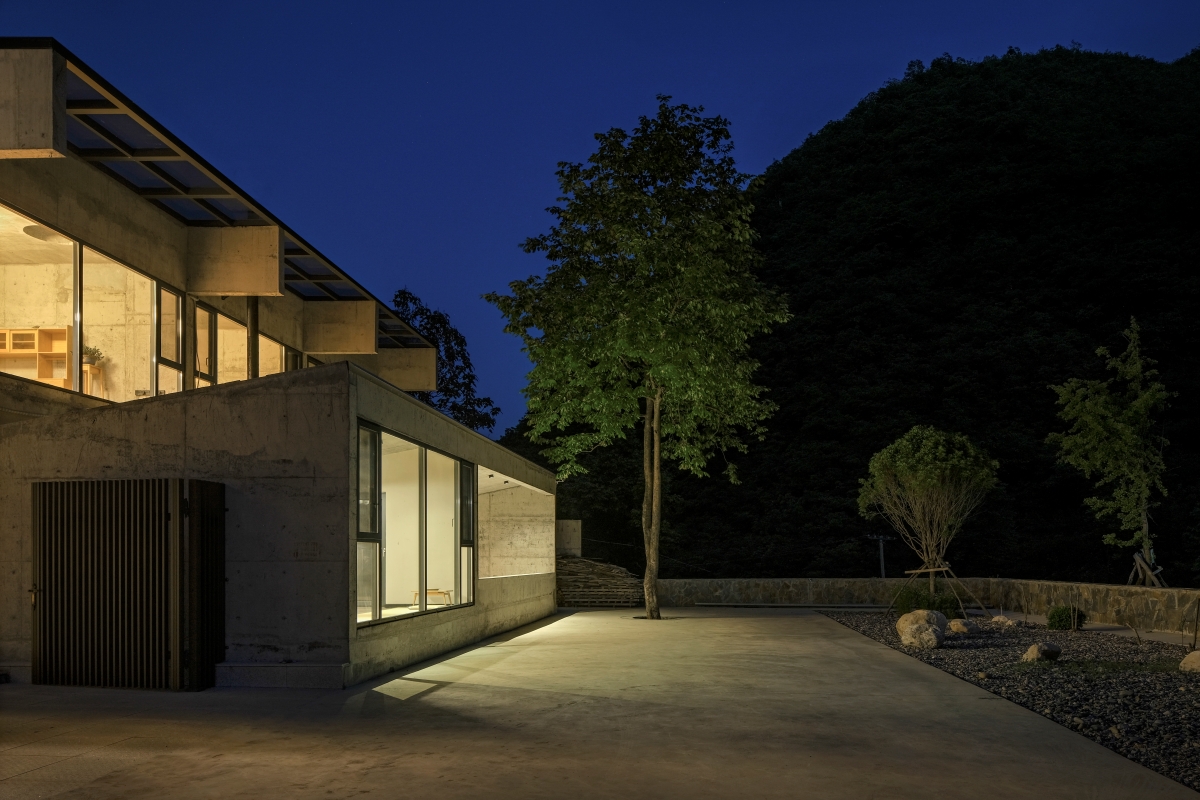
Four years ago, a gentleman who opened a factory in Dongguan contacted our office via email and said that there was a plot of land in his hometown. He wanted to build a house and asked me to help him design it.
After detailed discussion, I learned that the local transportation was inconvenient, and the transportation of building materials was very difficult. In addition, the surrounding population was sparse, so the labor cost was relatively high. Moreover, at that time, I was working in Tokyo and it was impossible to stay in Xunxi County for a long time. This series of difficulties made me want to push out this design at one point, but after seeing the site, I decided to proceed for one reason only: the cliff.
The small county located in Hubei Province, China. Which is adjacent to the Qinling Mountains in the north and the Han River in the south. The traffic is inconvenient. Our site is hidden deeply in the mountains. The cliff is hard and its rough texture is like giant palmprint.
The valley there is quiet, with morning mist filled. The cliffs block the cold wind from the north and wrap the site inside. The corners of the peaks, the straightness of the cliffs, and the curvature of the mountain roads all hint at sone geometric elements.
The wall of the building turns diagonally to surround the western side of the mountain, which forms a narrow entrance. The second floor of the house echoes the trend of the mountain with an arc wall.
The beams of the building are huge, protruding from the north and south sides, as if growing from a cliff. The north side of the house approaches the cliff, forming a narrow linear garden. The south side of the house faces the green mountains and opens to embrace nature. The conical space on the roof responds to the shape of the mountains, with only two circular windows inside that can see the external scenery. The light comes from above, making it an introspective space to face oneself alone.
The building adopts four types of elements: Square, Circle, Triangle, and Turning Line to respond to local life: "square" refers to the living room and bedroom, that is, the regular living routine; 'Circle' refers to the entrance and skylight, that is, the sensual side face of the house; The 'triangle' is like a mountain shape and also a meditation space towards the heart; The 'turning line' is the wall that encapsulates and accommodates the surrounding environment. I have always believed that in the face of nature, every inquiry from a person will receive a response, and the more obvious the action, the more direct nature's response becomes. The mutual reference between geometry and nature has become the source of architectural spatial beauty.
Nowadays, many people like concrete, but what they like is not the original rough texture of concrete, but the treated smooth surface. As an important component of concrete, aggregates were initially extracted from the mountains. When I saw the cliff walls, I realized that silk and smoothness were not its original properties. Concrete should maintain its rough and tough texture like hard stones.
However, roughness can also be delicate: what remains between the walls is the persimmon tree in front of the house, and between the beams, columns and the floor slab, divine light is poured freely, all of which will bring a dense atmosphere to the building.
After four springs, the house was finally completed. Cliff House "is the third independent residence built by our studio. It has been 15 years since I first worked on house design in college. Some people say that architecture is an art of delayed gratification. I believe that as long as I love drifting, the images in my mind will emerge years later.
设计图纸 ▽


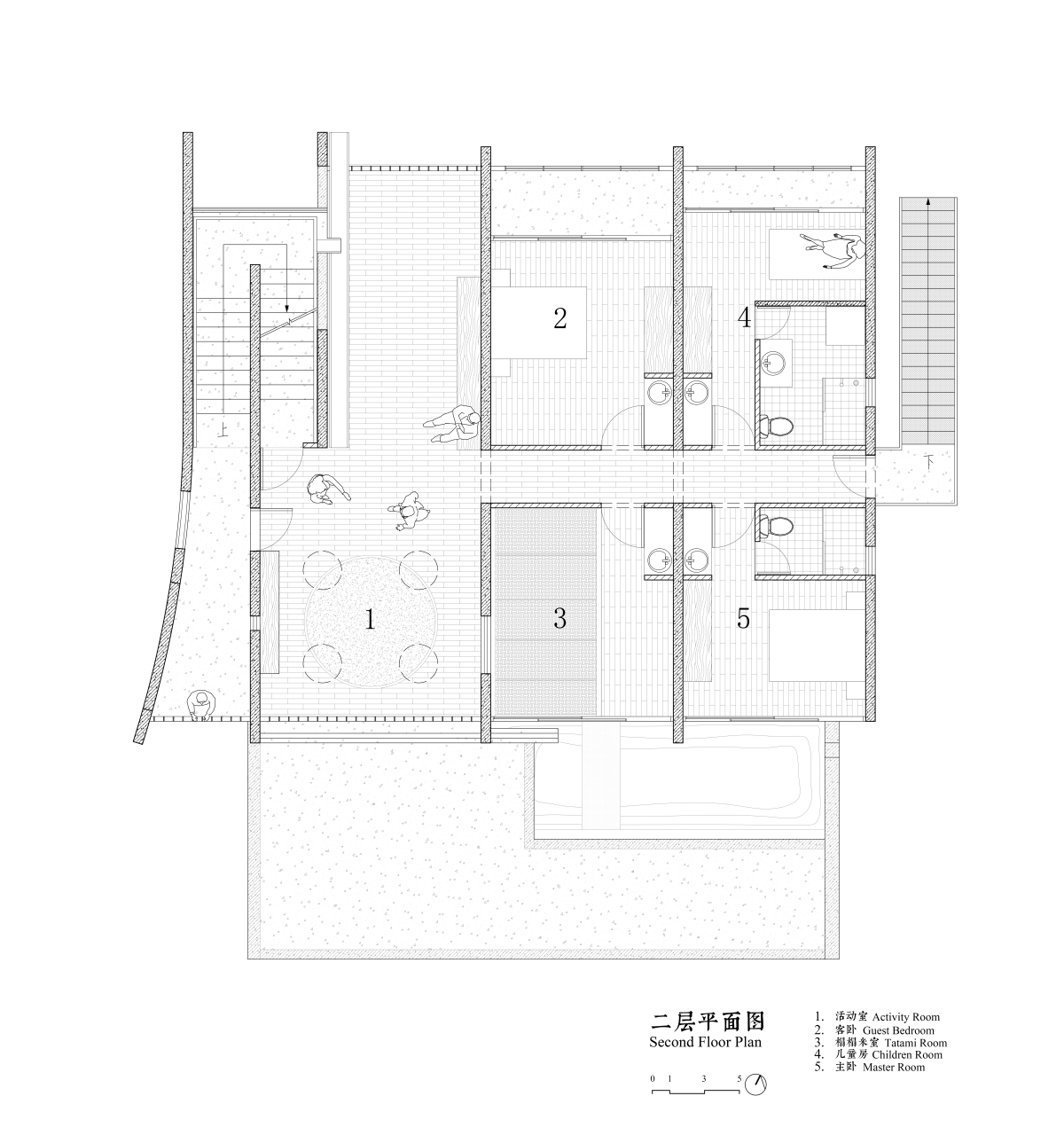

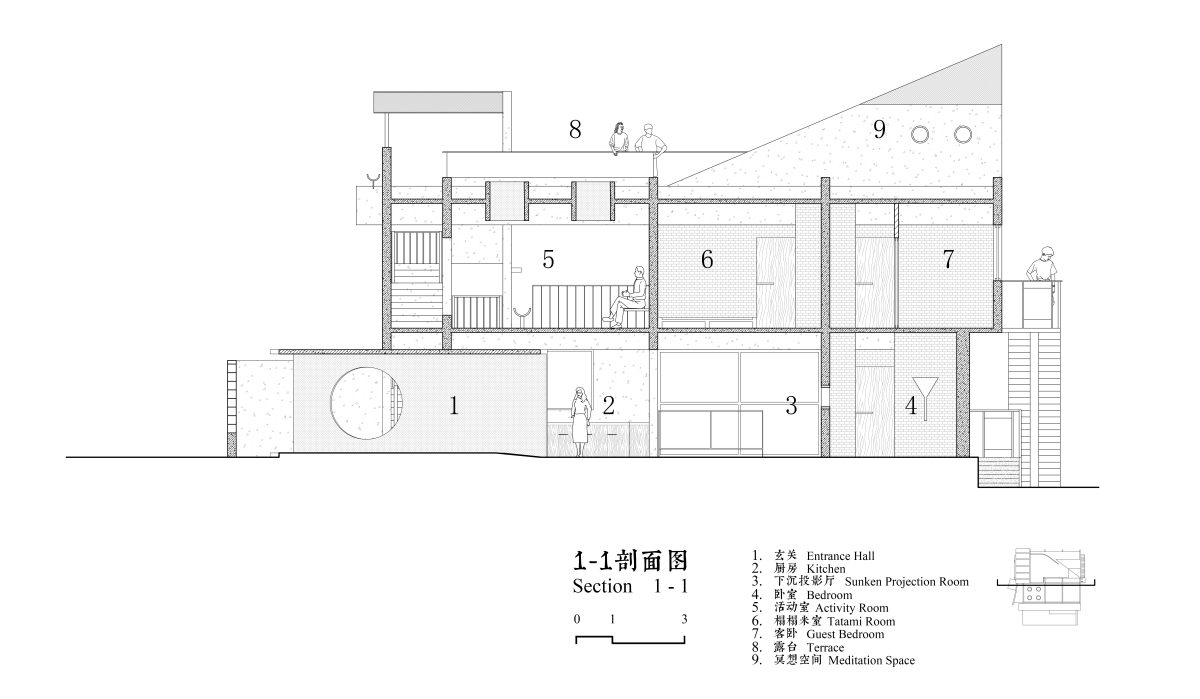

完整项目信息
项目名称:崖之家
项目类型:独立住宅
设计单位:郦文曦建筑事务所
主持建筑师:郦文曦
设计团队:周无及、林上亮、吴顺驰、叶圣韬、来鹏飞(结构)、王红英(电气)、姜玉娟(给排水)
项目地点:湖北
建筑面积:450平方米
材料:木工板模板素混凝土、型钢(元茂建材-十堰当地加工厂)、玻璃(金经玻璃)、红砖(十堰地方砖厂)
设计时间:2022年
建成时间:2023年
摄影:金伟琦
版权声明:本文由郦文曦建筑事务所授权发布。欢迎转发、禁止以有方编辑版本转载。
投稿邮箱:media@archiposition.com
上一篇:魔都建筑奇谭记 | 站在装饰艺术的十字路口
下一篇:安石卷厕 / 在行建筑设计事务所